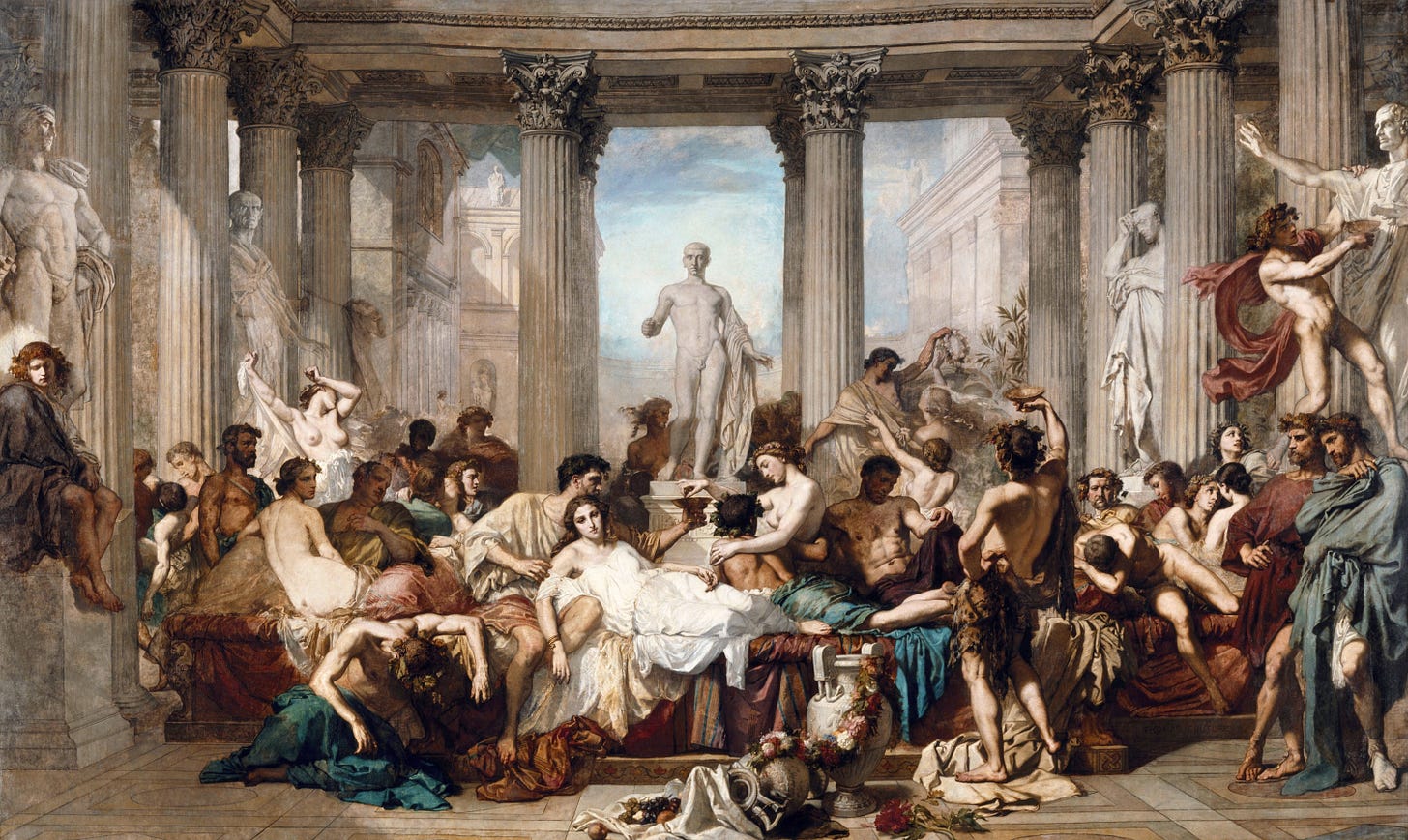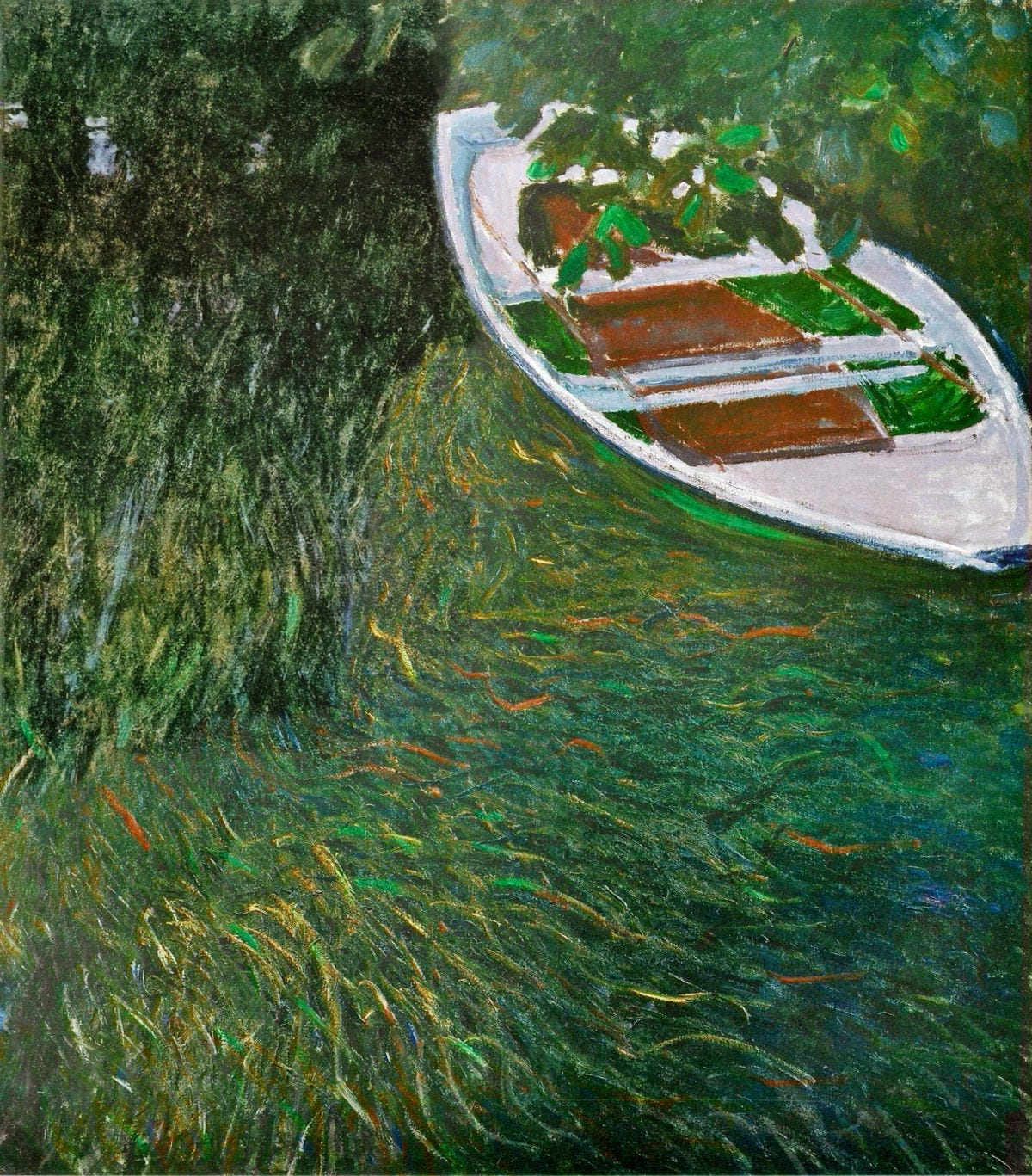Manet, Monet, Repetition, Light
On 19th Century Realism, Impressionism and exploration of subject and style
Alongside the development of urban culture in 19th-century Europe, a maelstrom of influences and creative explorations, the world of visual art produced Édouard Manet and Claude Monet, pioneering painters that incorporated new subjects, rejected the status quo, and laid a foundation for modern art.
Édouard Manet, 1832 - 1883, pursued painting as a profession, rejecting his fathers’ encouragements towards law or military service. Manet rejected the classical subjects painters of the time generally depicted with elaborately staged scenes with models, props, and costumes.
Influenced by the politically motivated far-leftist Gustave Courbet to represent everyday life, rather than aristocratic life, Manet would incorporate expansive, loose, visible brushstrokes, a reduced sense of depth that flattened scenes, highlighting the surface, rejecting idealized presentation.
The subjects of his early work challenged conceptions of propriety and beauty, with crass and provocative depictions of prostitutes confidently gazing at the viewer. Manet was criticized as “the apostle of the ugly and repulsive.”
These insults were continual and took a toll on Manet.
Many of Manets’ paintings are rooted in earlier works of earlier painters and he used these classical scenes to emphasize his departure from convention. The patterns of prior artistic periods were repetitiously used to push forward new ideas about the purpose of the artist and the place of art.
Art is always exploring the relationship between ideal and real with materials and craft and Manet pushed the boundaries of respectability, mirroring back to Paris the fullness of a developing urban culture.
While Manets’ tutor, Thomas Couture, would comment with his paintings on the decadence of Rome at its height with pieces like The Romans during the Decadence, Manet would represent and embody the decadence of his own time with pieces such as Luncheon on the Grass.


While the background and context for Manet’s work are interesting and important, for the man, painting was life.
It is not enough to know your craft - you have to have feeling. Science is all very well, but for us imagination is worth far more.”
- Édouard Manet
An artist through and through, he desired to represent the world beautifully in accordance with his internal experience. This was a labor of love. He was as much a product of the past as of his own time.
His radical breaking with convention, rooted in tradition, encouraged others to pursue subjects and styles outside the mainstream of visual art in 19th-century Paris.
Claude Monet is chief among those who continued exploring how brushstrokes might depict the everyday and pursued with obsessiveness how to capture on canvas the varied qualities of light and the beautiful. Reviewing Monet’s body of work is to be introduced to visual meditations of place and time. His series of paintings of the same scenes at different times of day with different shades of colors and tones are examples of how artistry, craft, and vision develop over time with love.
Monet was more concerned with landscapes, seascapes and urban life, principally reflecting nature in his work. Monet painted outside, in the open air, a foundational practice of impressionism and of many many painters working today.
Technology enabled this move outside through tin tubes of oil paints.
Reflecting on his first experience painting outside:
“I was overcome by deep emotion, suddenly it was as if a veil was torn away… My destiny as a painter opened out before me.”
The capturing of light dancing with nature became Monet’s obsession. Fantastically productive, he left behind 2000 paintings, 600 drawings, and 3000 letters.
Monet was initially criticized as mundane, pretty, childish.
And Monet continued mining the vein he established for himself, working till the age of 86, nearly blind by that time, on giant paintings of water lilies.
With Manet, I see the throughline of creative exploring of method, style, subject and intention. His willingness to be true to himself and to develop artistically in the face of insults and derision is an example for us all. He was himself, accepting the inspirations of the past and present and filtering it all through his hands with oil, brush and canvas.
From Manet to Monet, I see the throughline of creative inspiration, mentorship and practice. Monet cultivated a community, learning from Manet, learning from his friends. Inspired by the light of the sun, by masters of old, by everyday life, by city streets, by Japanese woodcut prints, collecting 200 such prints, particularly of Katsushika Hokusai and Utagawa Hiroshige, he returned time and again to familiar subjects in his own established style.
While visual art in the Modern period would continue to push the boundaries of subject and style and medium, Monet was delighted to stay within his own world exploring with joy, the light and the beautiful, all without the need to be recognized as valuable by the reigning artistic orthodoxy. Perfectly happy to find an audience outside the academies of the day, Monet contented himself with his work and engaged the marketplace for visual art from a growing urban population.
For Monet, painting outside, and meditating on the light as it evolves was an end in and of itself. To see and reflect and represent the natural world was a meaningful act, sustaining and affirming of life.
Art collectors too, such as Albert C. Barnes (1872 – 1951) were also soundly criticized for collecting Impressionism’s finest examples, Renoir, Cézanne, Matisse, Picasso, Van Gogh, Manet and Monet too. Barnes suffered from withering criticism from the art world and rejected their mocking.
Barnes loved the beauty of the Impressionists and amassed the most significant private collection of their work in the world. Barnes believed in the transforming power of the arts. He believed that art was for everyone and established the Barnes Foundation to make accessible to all the works in his collection.
He designed the rooms of his own museum to showcase Impressionist paintings alongside African sculpture, metalwork, decorative art, Orthodox Icons and more.
I recall visiting the new Barnes Foundation in Philadelphia some years ago. It was a wonderful afternoon, each room it’s own world of beauty and meaning.
The collections of each room remind the visitor that art is made from the elements of the material world. Craftsmanship is foundational. Commonly used artifacts are carefully crafted for every use. These common artifacts when crafted well, items like door knockers, a tankard, keys, teapots, furniture, clothing, all these are little pieces of art, when crafted carefully, beautifully.
So it is with our lives. Carefully crafted lives are works of art that reflect the beauty we encounter in the world when we seek that beauty.




What particularly hit me, in regard to my project, was this: “the patterns of prior artistic periods… used to push forward new ideas” - I’m writing a novel for 12 year olds, with a reference in it to Enid Blyton, iconic author of mid 20th century children’s books in Britain. Now I am thinking differently about how to play with that. Thanks for that spark!
Great article! Thanks. Id like to go to the Barnes Foundation. And, have to look for art shows in the bay area!